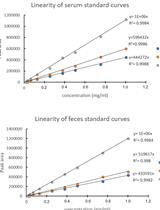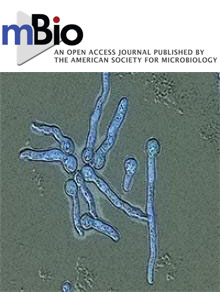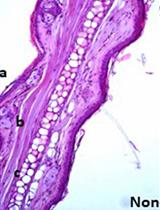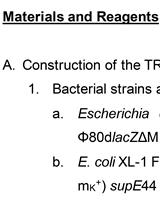- EN - English
- CN - 中文
Visualizing Hypoxia in a Murine Model of Candida albicans Infection Using in vivo Biofluorencence
用活体生物荧光法观察小鼠白念珠菌感染模型中的缺氧情况
发布: 2019年08月05日第9卷第15期 DOI: 10.21769/BioProtoc.3326 浏览次数: 4905
评审: Emily CopeFilipa VazSveta Chakrabarti

相关实验方案

利用气相色谱法定量分析小鼠血清、结肠管腔内容物和粪便中短链脂肪酸
Willian Rodrigues Ribeiro [...] Caroline Marcantonio Ferreira
2018年11月20日 14370 阅读
Abstract
Candida albicans is a leading human fungal pathogen that uses several metabolic adaptations to escape immune cells and causes systemic disease. Here, we describe a protocol for measuring one of these adaptations, the ability to thrive in hypoxic niches. Hypoxia was generated after successful subdermal infection with C. albicans in a murine infection model. Hypoxia was measured using a fluorescent dye for carbonic anhydrase 9, a host enzyme active under hypoxic conditions. Emitted fluorescence was subsequently quantified using an IVIS system. This protocol was optimized for the use in subdermal infection in mice but has the potential to be adapted to other models of fungal infection.
Keywords: Candida albicans (白色念珠菌)Background
Fungal colonizers of humans have evolved to sense and adapt to niches available in the host (Grahl and Cramer, 2010). Oxygen is a changing environmental parameter. Levels change in different tissues and during different stages of infection and immune activation (Carreau et al., 2011; Wenger et al., 2015). The ability to sustain growth and to survive in low oxygen environments has been linked to virulence in several fungi (Shepardson et al., 2013; Gresnigt et al., 2016; Pradhan et al., 2018). We have developed a protocol to follow the generation of hypoxia in a mouse infected with C. albicans (Lopes et al., 2018). We chose subdermal infection as a local, non-disseminated model of mycosis with acute onset which allows analysis of hypoxia in a confined space, where C. albicans and host cells interact (Urban et al., 2009; Santus et al., 2018). Thereby, natural variation of oxygen levels in other tissues can be eliminated and secondary effects from distant locations arising in systemic infection can be avoided. During infection, hypoxia is created mainly by neutrophil influx to the site of infection. Neutrophil extravasation and the activation of oxygen-consuming enzymes create environments with low oxygen levels. In turn, C. albicans exploits this environmental shift to avoid immune recognition by changing cell wall composition leading to masking of recognized entities (Lopes et al., 2018).
Materials and Reagents
- Pipette tips (P20, P200, P1000)
- Inoculation loop
- Glass or disposable round bottom sterile tubes for growing 10 ml cultures of yeast (Sarstedt, catalog number: 62.547.004)
- Tube, 50 ml (Sarstedt, catalog number: 62.547.004)
- 1 ml micro-fine U100 insulin syringes (BD, catalog number: 324827)
- Latex gloves
- Candida albicans wt isolate SC5314
- Mice 6- to 8-week-old albino female mice [B6(Cg)-Tyrc-2J/J; Jackson Laboratory-USA]
- PBS (Thermo Scientific, catalog number: 18912014)
- Isoflurane (Orion Pharma, Abbott Laboratories Ltd., Great Britain, CAS: 26675-46-7)
- HypoxiSense 680 Fluorescent Imaging Agent (PerkinElmer, NEV11070r)
- Yeast nitrogen base (Difco, catalog number: 233520)
- Ammonium sulfate (Sigma, catalog number: 31119)
- Yeast Synthetic Drop-out Medium Supplements (Sigma, catalog number: Y1501-20g)
- Glucose (Sigma, catalog number: 47829)
- Synthetic complete dropout medium (SC medium) containing 2% glucose (see Recipes)
- 1x PBS (see Recipes)
Equipment
- Pipettes (P20, P200, P1000)
- 30 °C shaker for growing yeast cultures (speed approximate 180 rpm) (IKA KS 4000i)
- Centrifuge (Eppendorf, model: 5180 R)
- Cell counter Vi-CELL Cell Viability Analyzer Beckman Coulter
- GI-8 gas anesthesia system (Caliper Life Sciences, Inc.)
- Electric clipper to shave mice (Moser Chromini)
- Heating lamp
- Xenogen IVIS Live Animal Imaging System (PerkinElmer)
- Incubator (Binder KB 53)
Software
- Living Image software 4.5 (PerkinElmer)
Procedure
文章信息
版权信息
© 2019 The Authors; exclusive licensee Bio-protocol LLC.
如何引用
Lopes, J. P. and Urban, C. F. (2019). Visualizing Hypoxia in a Murine Model of Candida albicans Infection Using in vivo Biofluorencence. Bio-protocol 9(15): e3326. DOI: 10.21769/BioProtoc.3326.
分类
免疫学 > 动物模型 > 小鼠
微生物学 > 微生物-宿主相互作用 > 体内实验模型 > 哺乳动物
细胞生物学 > 细胞成像 > 荧光
您对这篇实验方法有问题吗?
在此处发布您的问题,我们将邀请本文作者来回答。同时,我们会将您的问题发布到Bio-protocol Exchange,以便寻求社区成员的帮助。
提问指南
+ 问题描述
写下详细的问题描述,包括所有有助于他人回答您问题的信息(例如实验过程、条件和相关图像等)。
Share
Bluesky
X
Copy link











